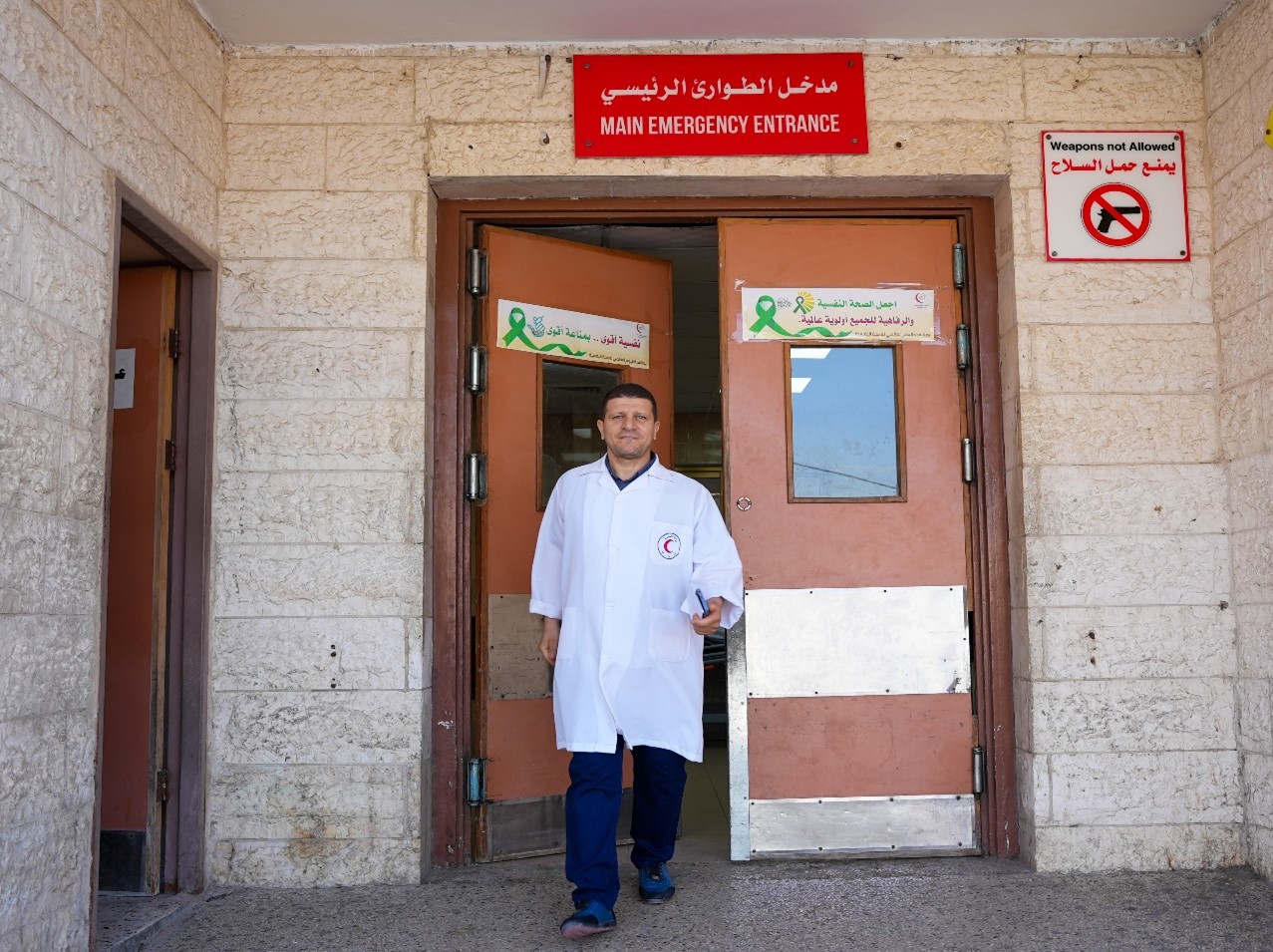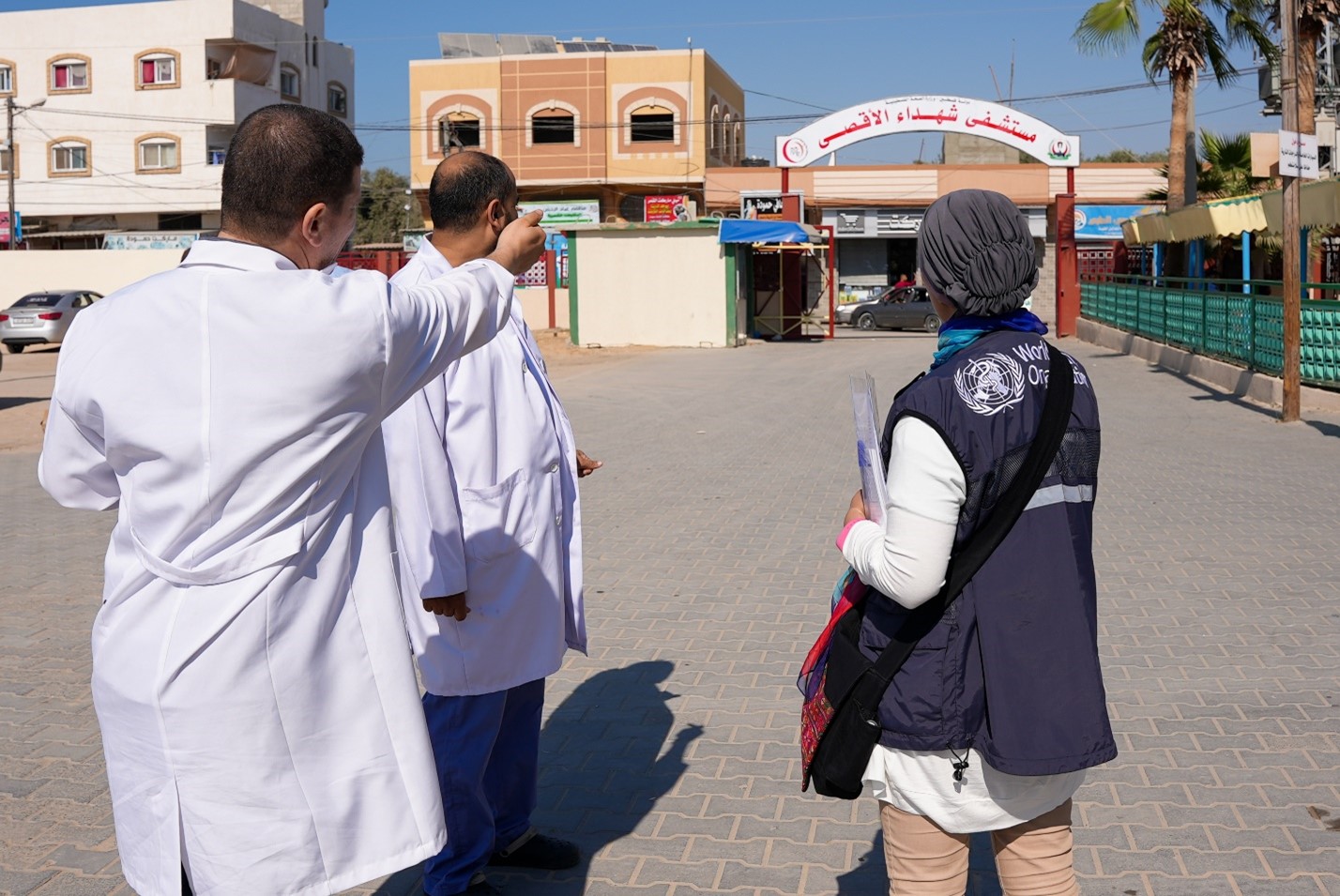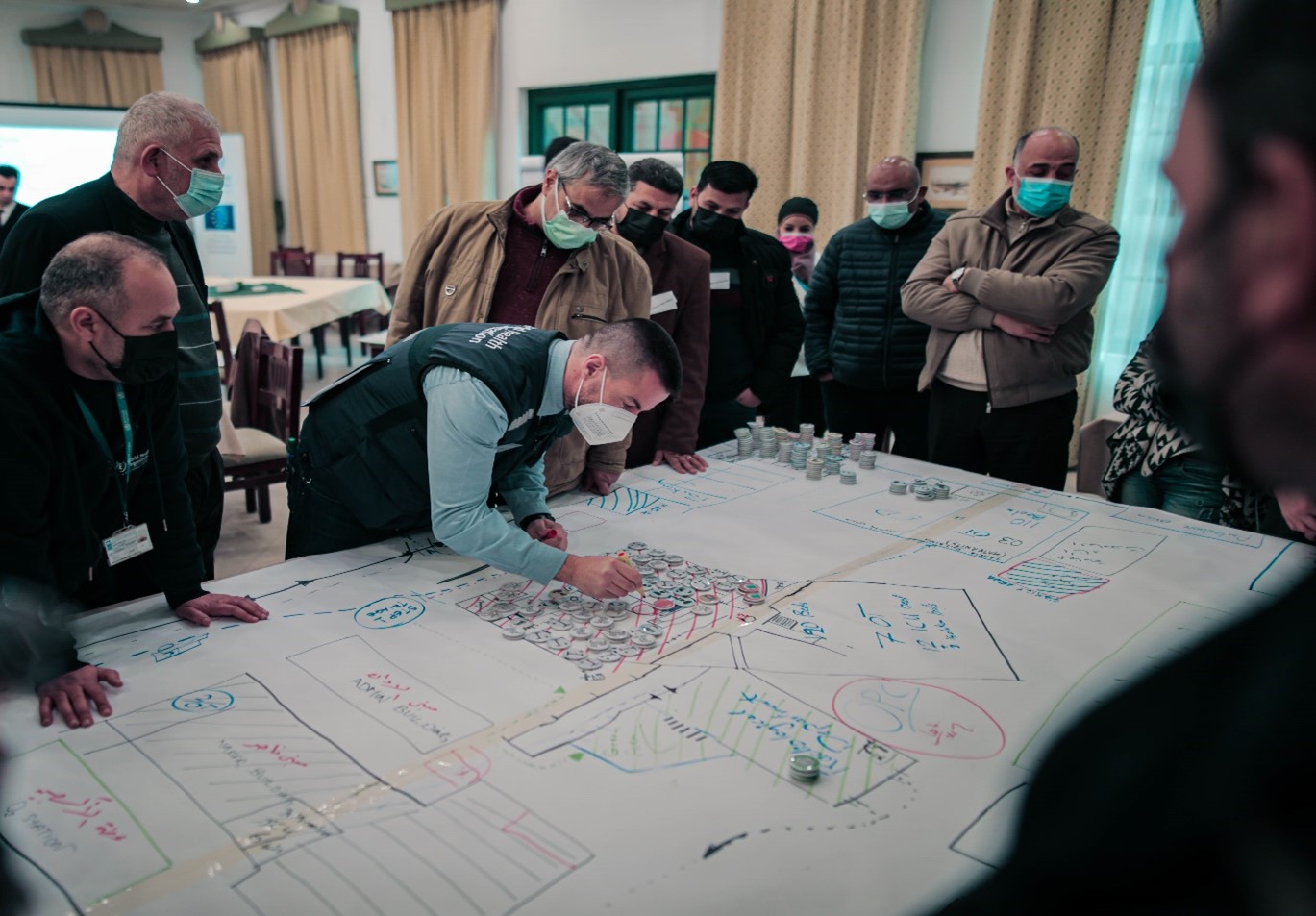13 November 2022 – Dr Naseem reached home after a long shift at the hospital, ready to rest and recharge. He had been looking forward to spending time with his children but found it hard to shake off his worries and disengage his mind. The air felt heavy. The news about growing tensions in Gaza Strip seemed impossible to escape. WhatsApp groups were relentlessly pinging. Neighbours, family members, and people on the street were all talking about the same thing. Memories of the 2021 escalation were still fresh in their minds.
Dr Naseem, who works as the Head of Emergency at the Al Aqsa Hospital in the Gaza Strip, hadn’t been at home for long before the news of the August escalation broke. His phone rang shortly after. He knew precisely why he was being called. Hurriedly sipping his tea, he got ready for what was going to be a very long day ahead.
Within an hour of the call, he was at the hospital supervising staff to prepare for receiving and treating casualties. “We knew from previous experience that the situation could deteriorate quickly. We needed to act fast and get ourselves organized. Delays in getting the injured immediate care could cost lives during emergencies. There is no margin for error,” says Dr Naseem.
 Dr Naseem, Head of Emergency at the Al Aqsa Hospital, Gaza
Dr Naseem, Head of Emergency at the Al Aqsa Hospital, Gaza
Equipped with new understanding from the mass casualty management training delivered by WHO, he declared a state of heightened readiness. “I had to start making decisions as we waited for the management to arrive,” he recalls.
He immediately began working with key teams to reorganize the hospital entrances and exits to prevent crowding and ensure optimal patient flow. An emergency triage area was set up, family and press waiting areas were defined, non-emergency patients were discharged or moved to make space for critical cases, and 50 emergency medical kits were prepared to be deployed.
 Dr Naseem, points to the hospital gate that was converted to an entrance for causalities for effective management of crowds during the August escalation
Dr Naseem, points to the hospital gate that was converted to an entrance for causalities for effective management of crowds during the August escalation
“We had developed the hospital emergency plan during our training and now we are putting it into action. Though we all did our best during previous emergencies, the ad hoc approach added to the chaos. This time was different. We were like a well-oiled machine, all units working together as one against a plan,” says Dr Naseem.
He is one of 90 clinical and non-clinical health workers trained on mass casualty management protocols since June 2021, using a curriculum developed by the WHO Academy. Thanks to support from the European Union Humanitarian Aid, Italian Agency for Development Cooperation (AICS), and Swiss Development Cooperation (SDC), the training has improved the emergency preparedness and response capacity of hospitals and health workers. It has also provided a systematic method to equip health workers with standardized skills, ensured that they speak the same technical language, and follow a clear hospital emergency plan.
 A tabletop exercise session during the mass casualty management training in the Gaza Strip
A tabletop exercise session during the mass casualty management training in the Gaza Strip
In the future, this approach will allow the emergency deployment of Dr Naseem and many like him to any of the 7 main hospitals in Gaza to ensure adequate availability of health workers during crises.
“I’m used to difficult situations, but the calm I felt this time was something else. I think it comes from the feeling of being prepared and organized. It also allows introspection. We now have set standards that we need to hold ourselves to and benchmarks to evaluate our response against to ensure ongoing improvement – a first for us”, says Dr Naseem.








